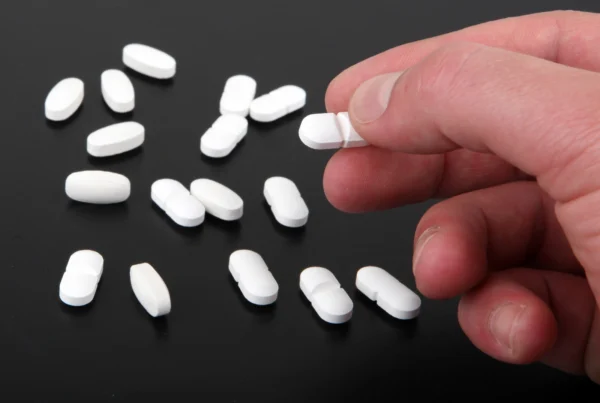
Table of Contents
Key Points
- Klonopin can stay in your system for at least a week, and often for much longer
- It can be detectable in a hair follicle test for up to 90 days.
- Klonopin’s half-life is much longer than for most other benzodiazepines.
- As a Schedule IV drug, Klonopin has the potential for physical dependence or psychological addiction.
Klonopin can stay in your system for at least a week and very often can be detectable for much longer. For example, a hair follicle test may be able to detect it for up to three months after your last dose.
Several factors unique to you as an individual, as well as the testing method used will influence how long it affects you and how long it can be detected by drug tests.
What is Klonopin?
Klonopin is the brand name in the US for clonazepam, a prescription drug that is a type of benzodiazepine, or “benzos”.
Clonazepam is a high-strength medication with prolonged action.
The Drug Enforcement Administration (DEA) classifies clonazepam as a Schedule IV controlled substance because it has the potential for misuse and/or dependence, albeit less than that for Schedule I, II, or III drugs.
It’s taken orally in tablets of 0.5mg to 2 mg strength.[1]
In addition to “benzos” street names for Klonopin may include:
- Downers
- K-Pin
- Ruffies
- Sleepers
- Super Valium
- Tranks
Why is Klonopin prescribed?
FDA approved in 1997, Klonopin (Clonazepam) is used to treat panic disorder, epilepsy, and other seizure disorders,[2] including an epilepsy-related disorder known as Nonconvulsive status epilepticus (NCSE).
It’s also used off-label for other neurological conditions such as:
- Insomnia
- Mania
- Restless leg syndrome
- Tardive dyskinesia, a disorder that cause repetitive abnormal, involuntary movements of the face, tongue, lips, trunk, arms or legs
 How long does Klonopin stay in your system?
How long does Klonopin stay in your system?
The length of time Klonopin stays in your system and can be detected in a drug test depends on two primary factors: the half-life of Klonopin and some specifics about your individual situation.
What’s the half-life of Klonopin?
The “half-life” of a drug refers to how much time it takes for your body to eliminate half (50%) of the substance from your blood plasma.[3] It doesn’t mean the drug is completely out of our system. For many drugs, it takes more than two half-lives for that to happen.
At a half-life of 30 to 40 hours, Clonazepam (the active ingredient in Klonopin) the drug has a longer half-life than other benzodiazepines.[1] So it may be one to two days before even half of your last dose of Klonopin is out of your body. It can take weeks to months for your system to be Klonopin-free and the drug undetectable.
What factors affect how long Klonopin stays in your system?
How long Klonopin stays in the body varies from person to person, often affected by factors such as:
- Your age
- The dose you take
- How frequently you use it
- How long you use it
- Whether your liver is compromised, how well your liver functions
- Any other drugs you use concurrently
How long can different drug testing methodologies detect Klonopin in your system?
In addition to the individual factors listed above, the manner in which your test for drugs will determine how long Klonopin can be detected.
| If the test uses: | Klonopin can be detected up to: |
| Hair follicle | 90 days |
| Blood | 6 days |
| Saliva | 6 days |
| Urine | 6 days |
How does Klonopin affect your body, and how does it make you feel?
Klonopin (clonazepam) increases the levels of a chemical in your brain called gamma-amino-butyric acid (GABA). When you have more GABA, you tend to feel more relaxed and calm. If you’ve had repetitive thoughts that make you feel anxious or bring on a panic attack, those will typically subside.
You may also feel drowsy, or even somewhat confused.
If you take higher doses of Klonopin, you may experience a euphoric “high”. This is one of the reasons the drug can become habit-forming.
What are some common side effects of Klonopin?
Common side effects of Klonopin (clonazepam) that you may experience when you take it include:
- Attention, concentration, and memory problems
- Depression
- Dizziness
- FatigueImpaired motor control, coordination, and balance
- Inability to walk
- Irritability
- Nausea
- Reduced appetite
- Slowed thinking, reaction time, and impaired decision-making
Immediate medical attention is needed if someone taking Klonopin exhibits any of these serious side effects:[3]
- Abnormally low blood pressure
- An increased in heart rate
- Becoming unconscious
- Breathing / respiratory difficulty or depressed breathing
- Extreme drowsiness
- Inability to feel pleasure
- Pronounced depression
- Seizures that are more frequent or more intense[4]
- Signs of mania, including pronounced increase in activity or talking
- Thoughts of suicide
- Trouble speaking
Who should not take Klonopin?
You should not take Klonopin if you: [5]
- Have a history of allergy or heightened sensitivity to benzodiazepines
- Have liver disease
- Have acute narrow angle glaucoma
- Are pregnant, unless you have carefully weighed the risks to your unborn child with the help of your doctor
- Are nursing
- Are driving or operating heavy machinery
- Are using other medications for anxiety, psychosis, convulsions, depression or an antihistamine. These can make you exceptionally drowsy.
- Are using alcohol, opioids, or other benzodiazepines. Doing so can slow your breathing or induce a coma which could be fatal.
Is Klonopin Addictive?
Yes, you can become addicted to, or dependent on Klonopin, especially if you use it for a long time.[6]
Signs of Klonopin Addiction or Dependence
If you notice the following signs in yourself or another, Klonopin addiction or dependence may be in effect:
Marked changes in mood: anxiety and panic attacks, marked irritability or depression, extreme euphoria.
Changes in behavior: someone who’s preoccupied with acquiring and using Klonopin, or acquiring or using it in a way that’s not as prescribed is likely to have a dependence on it.
Experiencing an extreme version of Klonopin’s side effects is another sign of possible addiction and dependence.
Someone who’s addicted to Klonopin may socially isolate, lose personal relationships, or lose interest in things that they used to enjoy, including sex.
Physically, someone who’s addicted to Klonopin may have extreme versions of its physical side effects listed above.
They may also become hypersensitive to sounds and sights, have their extremities become numb, develop a higher tolerance for the drug, have much more saliva in their mouth or need to urinate more, sweat more, have diarrhea, tingling in their body.
If they crave the drug, hear things that others don’t, seem to have a marked change in personality, or experience any of the psychological side effects listed above, they have developed a dependence on the drug.
What are common Klonopin withdrawal symptoms?
If you’ve developed a physical dependence on Klonopin and suddenly stop using it without medical supervision, it’s critical that you’re aware that some of the withdrawal symptoms listed below can have severe physical and mental consequences and even be life-threatening.
Symptoms of Klonopin withdrawal may take up to a week to be felt, can last for up to 3 weeks, and may include: [7]
- Excessive sweating
- Extreme anxiety or agitation
- Gastrointestinal distress
- Hallucinations
- Inability to relax, restlessness
- Insomnia
- Muscle cramps
- Panic
- Seizures
- Shaking or tremors
- Vomiting and/or pronounced nausea
Klonopin Addiction Treatment
Do not stop taking Klonopin suddenly without medical supervision.
The withdrawal symptoms listed above are serious and many require qualified medical treatment. Some can prove fatal.
If you are addicted to, or physically dependent upon Klonopin, it’s crucial that you get medical supervision to detox from it, combined with a treatment plan and support system.
A qualified professional will ask you about the particulars of your situation, assess your needs, and tailor a recovery plan to you.
Your recovery must include follow up and long term support to create a sober lifestyle: therapy, support groups, 12-step programs, meditation, life skills, social interactions.
There Is Always Hope
Recovery from Klonopin addiction or dependence is within your reach.
Frequently Asked Questions About How Long Klonopin Stays In Your System
Below are some of the most frequently asked questions surrounding Klonopin.
OCEAN RECOVERY EDITORIAL GUIDELINES
The internet contains a vast amount of misinformation, but when it comes to your health only peer reviewed, research centered data matters. At Ocean Recovery, all content published throughout our website has been rigorously medically reviewed by a doctorate level clinician, and cross checked for medical accuracy. Our editorial process helps our readers trust that the information they are consuming is factual and based upon scientific data. Your health is our top priority, find out more about how we safeguard the integrity of information on our website. Read More About Our Process

 How long does Klonopin stay in your system?
How long does Klonopin stay in your system?


